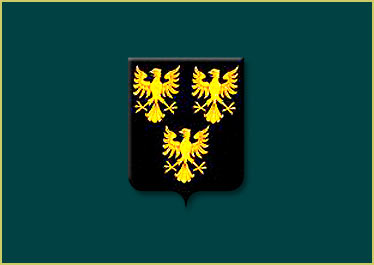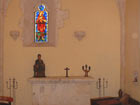

The castle comprises of a keep that is now the owners's private residence, guest accomodation and a guard room, offering a friendly welcome and a range of activities.

The castle is situated on the borders of Berry, Limousin and Poitou, Forges Castle is an architectural gem thanks to its historic authenticity and consistency of its period features.
The fortified home granted by Charles VII in 1447 to his faithful servant Jean de Poix is still a family treasure today as Hugues Tyrel de Poix, a Tyrel de Poix descendant, continues to preserve the medieval heritage.
The castle comprises of a keep that is now the owner’s private residence, guest accommodation and a guard room, offering a friendly welcome and a range of activities.
 |
 |
 |
 |
 |
 |
This fortress built at the start of the 14th century has retained its feudal character. Situated on a motte above the left bank of the river Anglin it was part of a line of fortified castles protecting the southern boundary of Berry. The square keep flanked by four round towers and surrounded on three sides by walls on which lean five towers containing many archers slots or holes. One of the towers was the dovecote. The way into the castle is from the south between two towers linked to the main part of the castle by a circular walkway containing murder holes used for firing arrows or for pouring boiling oil on invaders. In the inner courtyard is the four towered keep and to the south side the guard house. To the east, stables, the cellar and main castle chapel.
In the middle of the 15th century the castle and Seigneurship came into the Tyrel family of Picardie, Sires de Poix. According to letters from 4 May 1442, Jehan de Poix a henchman of Charles VII received from the king, the authorisation to “Fortify and create ramparts in the said place of Forges and to make moats, walls, towers, palisades, drawbridge and barbican there.” (These later constructions no longer exist.) He was granted this for “Good services of our said henchman, who helped us as much during war as in his said office.” Forges remained in the same family for nearly three centuries until Marguerite de Poix, who also held the title Dame de Forges (in various capacities). She married Antoine de Lage, Seigneur de la Palisse, around 1600 but left no descendants. Her sister Renée de Poix who inherited the castle was the wife of Pierre de Muzard son of Claude de Muzard. He lived at Forges and had two daughters, Catherine Dame de Forges, who married Charles de Montmorency and Gabrielle, Dame de la Rochebellusson. Forges was sold to the Marquis de Lussac who relinquished it to Matthieu Pinsonneau about 1715. The latter became Marquis du Blanc and sold it to Marie de la Vieuville, Marquise de Parabère, who was ruined by the extravagant life style she maintained at the Court of the Regent. This grand lady was forced to sell the Blanc title and lands in 1738, including those at Forges, to Claude Dupin, Farmer General, Seigneur de Chenonceau. He was a Kings Counsellor and lived in Paris, Quai d’Anjou, on l’lle Saint Louis. He was a grandfather of Georges Sand. After the death of Claude Dupin, Forges passed into the ownership of his grandnephew, Claude de Villeneuve who sold it to Léon Chézeau, agriculturist. Fernand Aubier of the Editions Montaigne bought it from him.
His descendants finally sold it to Vicomtesse Félix de Poix, the grandmother of the current owner who is the 13th generation since Jehan de Poix at Berry, and the 29th generation since his Picardie ancestor Gauthier Tyrel de Poix who went to England with William the Conqueror